Pop-Up Particle Pavilion Part 2: The Build & Demo
Follow articleHow do you feel about this article? Help us to provide better content for you.
Thank you! Your feedback has been received.
There was a problem submitting your feedback, please try again later.
What do you think of this article?
In this article, I attempt to explain how I built my particle pavilion. I will use a combination of words, photos & videos to demonstrate how sensors can monitor internal air quality and activate motorised shutter walls, servo-assisted sliding skylights, embedded warning lights & automatic fans to improve the user experience of shared spaces. Hopefully, you’ll get an insight into how I used the following components to realise my particle pavilion idea:
- Adafruit ESP32-S2 Feather with BME280 Sensor
- Adafruit Stepper Motor Featherwing
- Adafruit TFT FeatherWing - 2.4" 320x240 Touchscreen For All Feathers
- Adafruit SCD 40 - True CO2, Temperature and Humidity Sensor
- Mini Stepper Motor - 200 Steps - 20x30mm NEMA-8 Size (2 off)
- Micro 360 Degree Continuous Rotation Servo FS90R
- Linear actuator
- 5V DC, Axial Fan, 40 x 40 x 10mm, 7CFM
- Relay - 5V
- Kitronik ZIP Stick - 5 ZIP LED
- 4mm Economy Birch Laser Plywood - 600mm x 400mm
- sheet Clear Perspex Sheet (Cast) 4mm x 600mm x 400mm Lipo Battery - 3.7 v; 500mAh
- AA Battery pack; 3x 1.5V
- Jumper wires
- USB C to B Cable
- M3 button head screws
- M3 hex nuts
Guided Tour Around My Completed Pop-Up Particle Pavilion!
In one of the videos, you’ll able be to see the DesignSpark air quality monitor keeping tabs on the external air quality while the pavilion’s internal sensor monitors & then triggers various reactions to co2 levels from inside.
Next - Part 3
In part 3, I will be sharing the following:
- The files for all the laser cuts components
- The Code
- The Data Visualisation on Adafruit Io (IoT)
- More detailed wiring diagrams/guidance
- My reflections

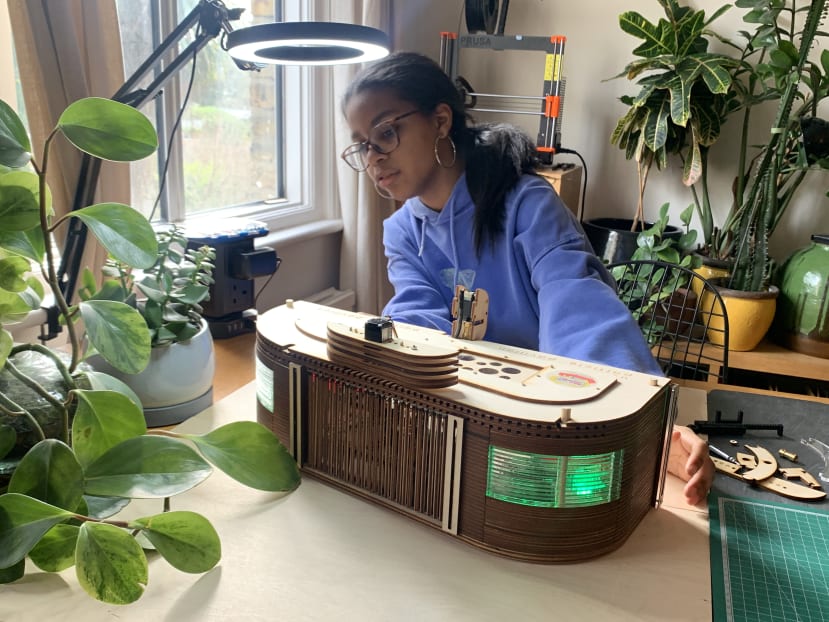
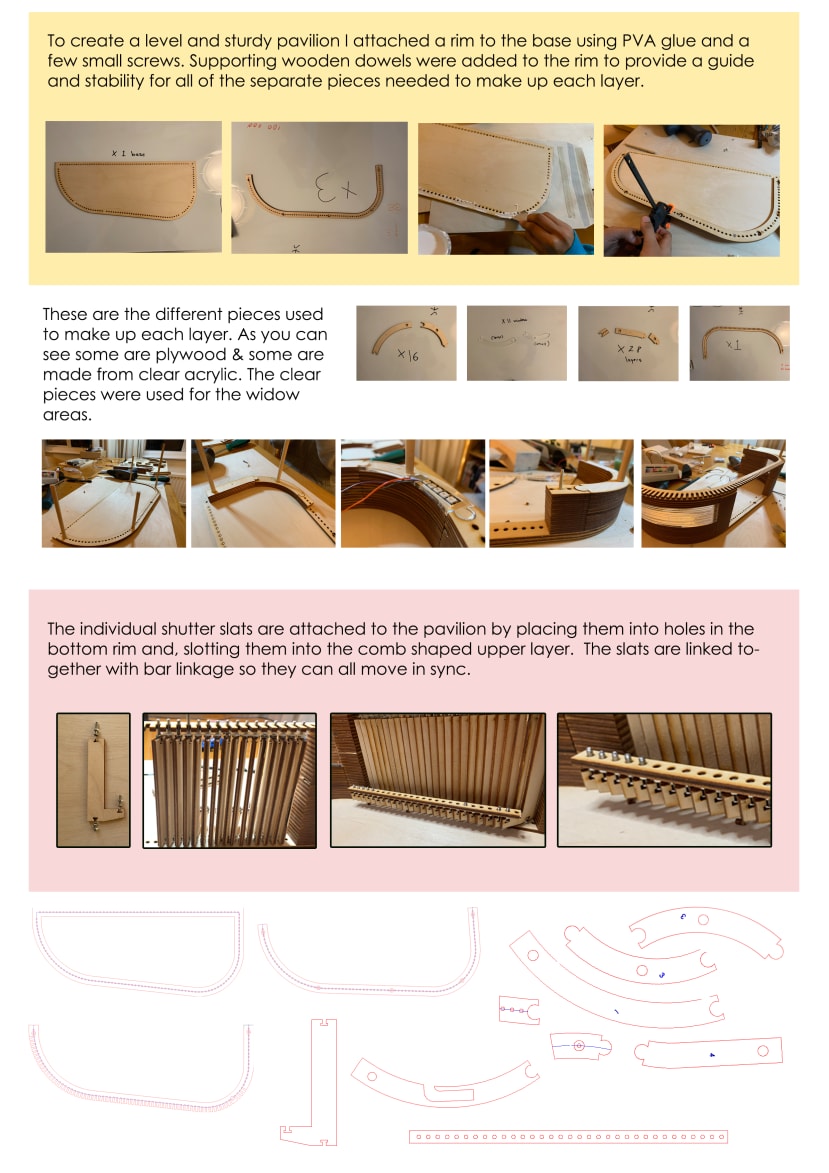
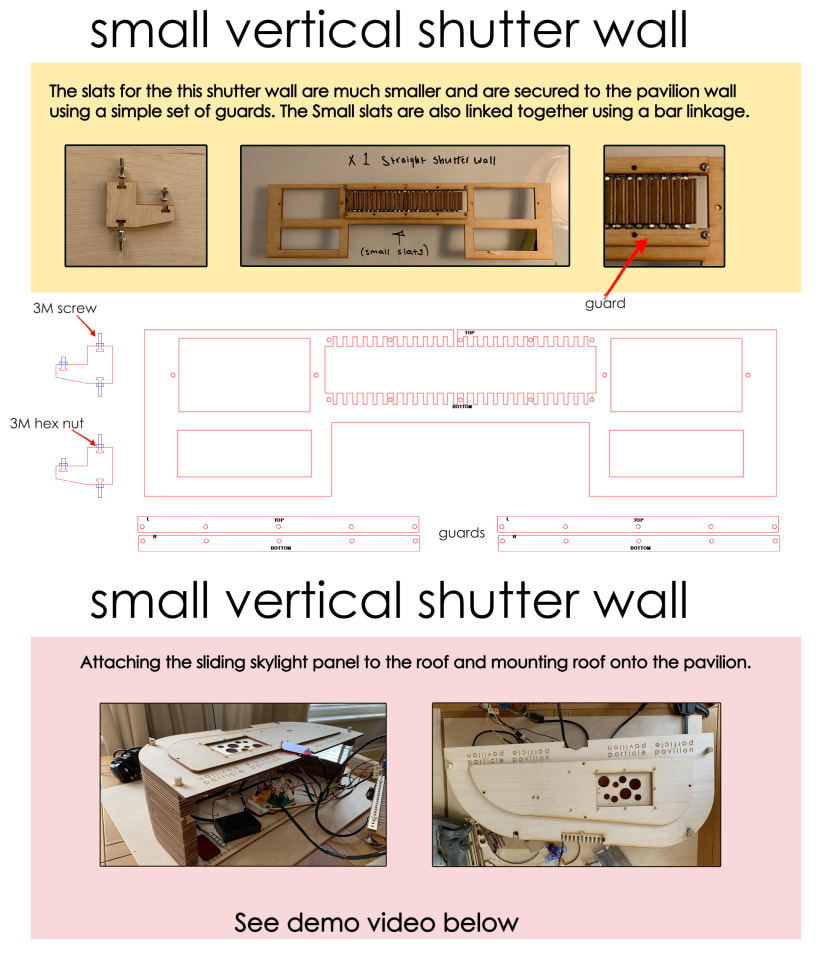
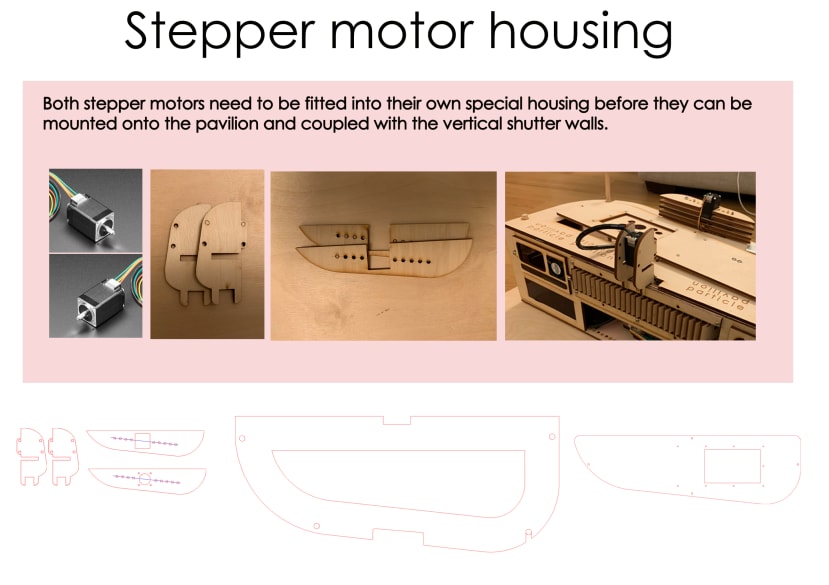
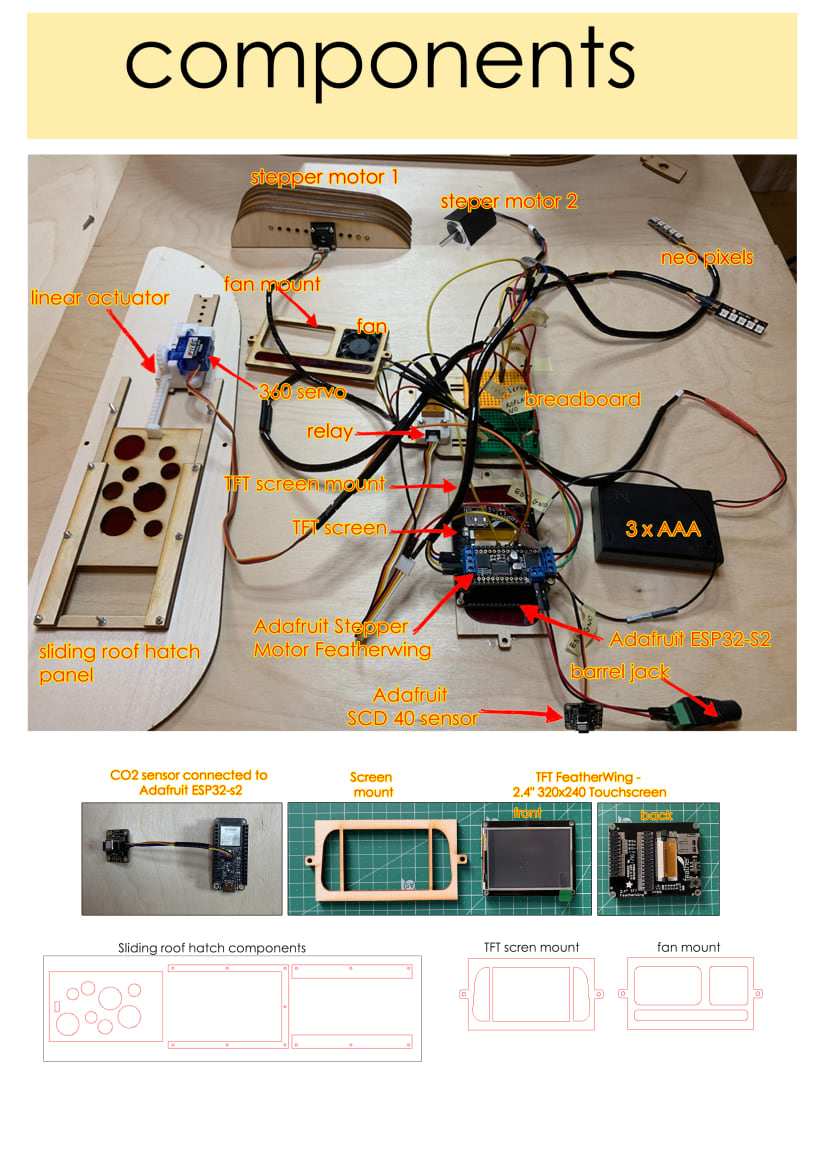
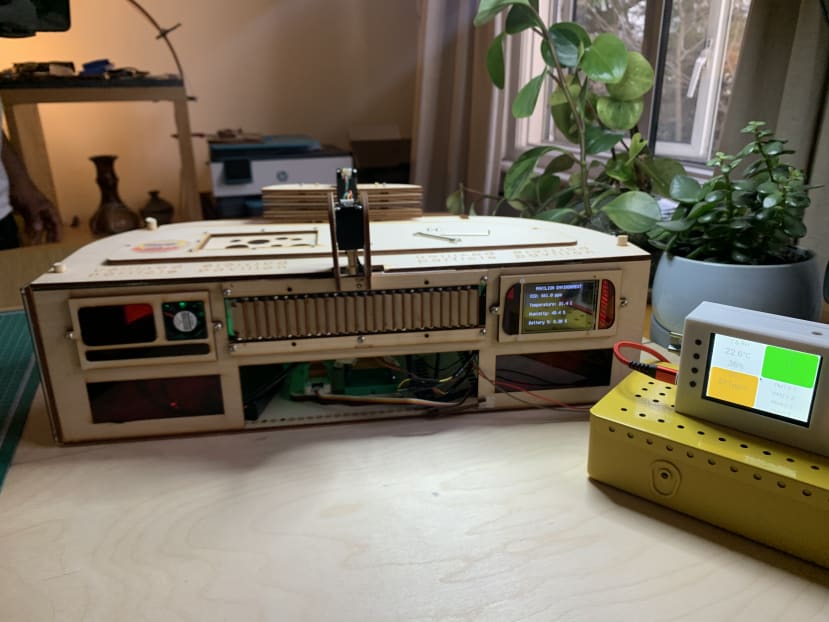
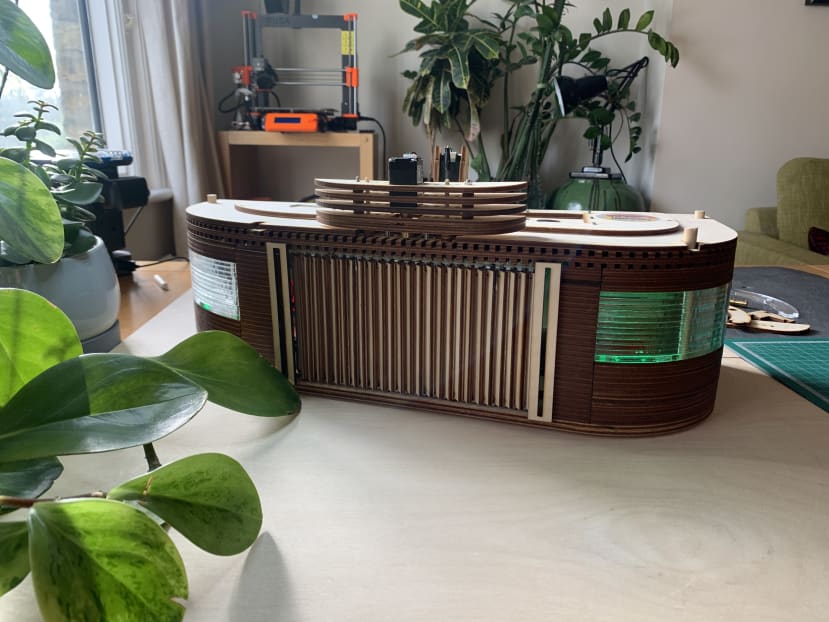
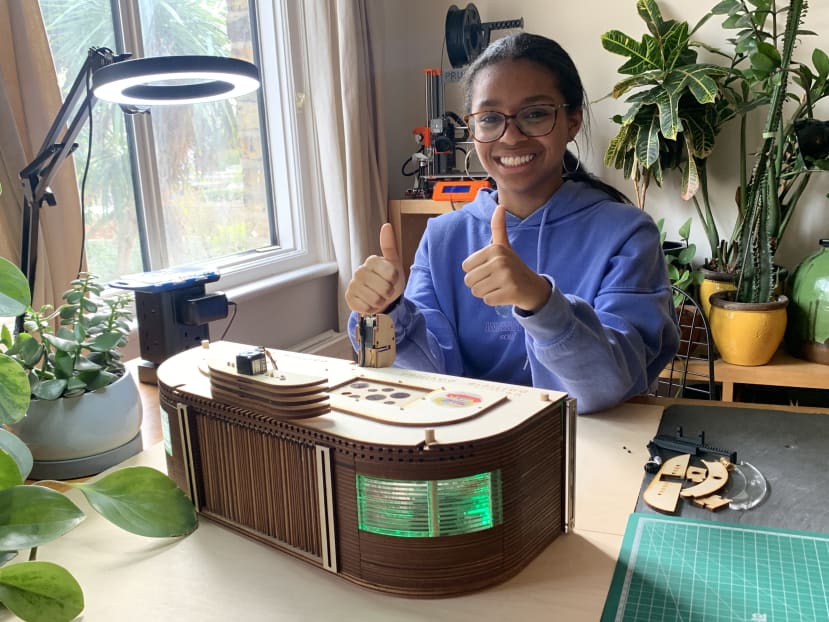
Comments